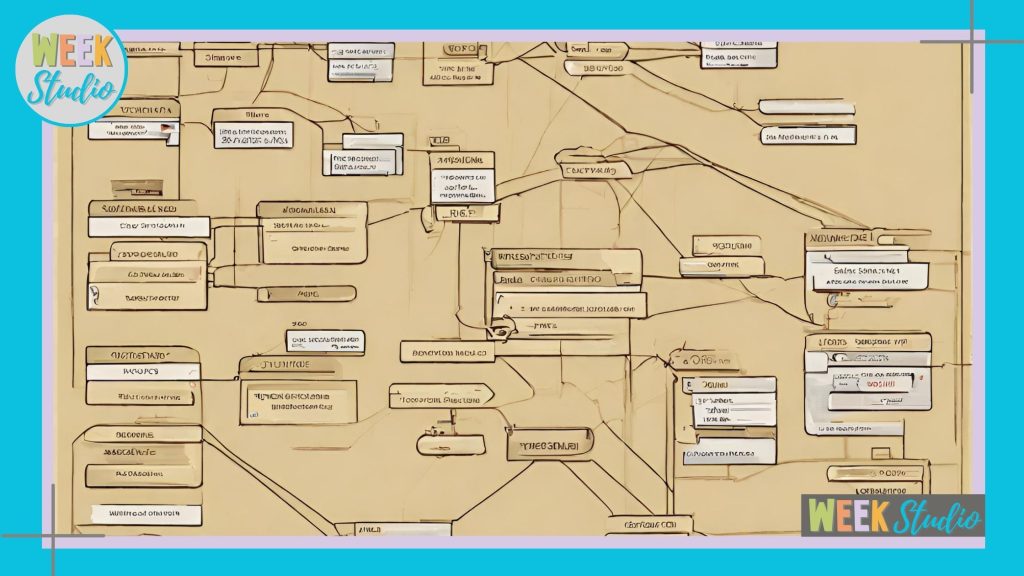In the dynamic realm of the digital universe, where websites jostle for visibility, one powerful tool stands out in ensuring that your online presence doesn’t go unnoticed: the XML sitemap. This unassuming yet pivotal component plays a crucial role in enhancing the way search engines interact with your website. As we embark on a journey to unravel the mysteries and advantages encapsulated in XML sitemaps, let’s delve into the fundamental question: What is the benefit of an XML sitemap?
Imagine your website as a sprawling library, filled with information waiting to be discovered. However, without a comprehensive map guiding search engines through the labyrinth of your content, vital pages may remain undiscovered, hidden in the recesses of the digital shelves. This is where the XML sitemap emerges as the librarian’s guide, providing a structured roadmap for search engine crawlers. Let’s unravel the layers of benefits woven into the fabric of XML sitemaps, exploring how they enhance the visibility, structure, and overall user experience of your online domain.
What Is Xml Sitemap

It also includes information about each URL, such as when it was last updated, how often it is updated, and how important it is. This information can help search engines crawl and index your website more efficiently. An XML sitemap can also help visitors find the information they need on your website. By providing a list of all the URLs on your website, they can quickly navigate to the page they are looking for.
How XML Sitemaps Facilitate Crawling and Indexing
At the heart of the digital ecosystem lies the intricate dance between websites and search engines. XML sitemaps, akin to a compass for search engine crawlers, play a pivotal role in ensuring that every nook and cranny of your website is explored and cataloged.
When search engines deploy their crawlers to navigate the vast expanse of the internet, they rely on signals to decipher the significance of each webpage. XML sitemaps provide an organized inventory, acting as a roadmap that directs crawlers to the most critical areas of your website. This results in a more efficient crawling process, allowing search engines to index your content promptly.
Examples of Improved Visibility in Search Results
To comprehend the tangible benefits of XML sitemaps, consider the scenario without one. Your website, brimming with valuable content, might go unnoticed by search engines. With an XML sitemap in place, however, search engines can swiftly discover and index your pages, leading to improved visibility in search results.
Picture this: a user initiates a search, and thanks to the well-structured XML sitemap, your website emerges as a relevant and authoritative source. This enhanced visibility can translate into increased organic traffic, demonstrating how a small yet impactful file can significantly influence your website’s online presence.
What Is The Benefit Of Xml Sitemap Mcq?

It also includes extra information about each URL, such as when it was last updated, how often it changes, and how important it is. XML sitemaps are used by search engines to better understand your website. They can also help you track how your website is performing, and identify any problems. Creating an XML sitemap is easy. You can use a sitemap generator like XML Sitemap Generator, or create the file yourself using a text editor.
The main benefit of an XML sitemap is that it can help your website rank higher in search engine results pages (SERPs). XML sitemaps provide search engines with more information about your website, which can help them index your pages more accurately. Additionally, XML sitemaps can help you troubleshoot problems with your website. If you notice that a particular page is not being ndexed correctly, you can use your XML sitemap to determine which pages on your website are not being included in search engine results.
The XML sitemap file is in XML format, which means that it is written in a specific markup language that is used to describe data. XML sitemaps are used by search engines to index websites more accurately, and they can also be used to troubleshoot website problems. If you are using a content management system (CMS) such as WordPress, you can create an XML sitemap automatically. All you need to do is install a plugin that will create the XML sitemap for you. If you are not using a CMS, you can create an XML sitemap using a free online tool.
What Is The Sitemap Xml For?
In the intricate world of web development and SEO, the XML sitemap stands as a digital beacon, guiding search engines through the labyrinth of your website. But what exactly is the purpose of this XML sitemap, and why is it a crucial element in the virtual arsenal of every website owner?
Utilizing XML Sitemaps for Structured Data
At its core, the XML sitemap serves as a structured blueprint of your website, providing search engines with valuable information about its organization and content. This extends beyond mere URLs; XML sitemaps allow you to include additional metadata and tags, providing search engines with insights into the nature of your content.
Impact on Rich Snippets and Enhanced SERP Appearance
One of the standout advantages of a well-crafted XML sitemap is its influence on rich snippets—the additional information displayed on search engine results pages (SERPs). By feeding structured data to search engines through the XML sitemap, you empower them to present richer and more informative snippets to users. This not only enhances your website’s visibility but also provides users with a glimpse into the relevance and quality of your content directly from the search results.
So, in essence, the XML sitemap acts as a herald, not only guiding crawlers through your digital kingdom but also conveying detailed information about the treasures it holds. This dual functionality elevates the significance of XML sitemaps beyond a mere navigational tool, making them instrumental in shaping how search engines interpret and present your website’s content.
What Is The Impact Of Xml Sitemap?

XML sitemaps are used by search engines to learn about websites and to better understand how they should rank the pages on those websites. When a search engine crawls a website, it looks for the XML sitemap and uses the information it finds to index the pages on the website. This means that the search engine can better understand the website, which can lead to better rankings for the website’s pages.
XML sitemaps are also used by web browsers to help users navigate websites. When a user clicks on a link in a web browser, the browser will look for the corresponding XML sitemap file on the website. If the file is found, the browser will use the information in the file to display a list of links to the pages on the website. This can help users find the pages they are looking for, even if the website’s navigation system is complex.
XML sitemaps can also be used by search engines to help index websites. When a search engine crawls a website, it will look for the corresponding XML sitemap file on the website. If the file is found, the search engine will use the information in the file to index the pages on the website. This can help the search engine find and index the pages on the website more quickly and accurately.
What Is The Main Purpose Of A Xml Sitemap In WordPress?

In the bustling ecosystem of content management systems, WordPress stands as a titan, powering a significant chunk of the internet. Amidst the myriad of plugins and features that make WordPress a go-to platform, the XML sitemap emerges as a silent powerhouse, contributing significantly to the SEO prowess of WordPress websites.
Enhancing Search Engine Discoverability
The primary purpose of an XML sitemap in WordPress is to enhance the discoverability of your website’s content by search engines. In the sprawling landscape of WordPress websites, the XML sitemap acts as a curated roadmap, guiding search engine crawlers through the diverse array of pages, posts, and media files.
Streamlining Indexing Process
WordPress, with its dynamic and often complex content structure, can present a challenge for search engine crawlers trying to efficiently index all relevant information. The XML sitemap serves as a beacon, signaling the importance and hierarchy of different content types. This structured guide enables search engines to index content more efficiently, ensuring that nothing valuable is overlooked.
Dynamic Content Updates and Change Notification
WordPress websites are dynamic, with content updates occurring regularly. The XML sitemap plays a crucial role in this ever-evolving landscape by notifying search engines about changes and updates. When a new post is published or an existing one is modified, the XML sitemap communicates these changes to search engines, prompting them to revisit and update their indexes accordingly.
Seamless Integration with SEO Plugins
In the WordPress ecosystem, SEO plugins often take center stage in optimizing websites for search engines. XML sitemaps seamlessly integrate with these plugins, providing a user-friendly and automated way to generate and submit sitemaps. This not only simplifies the technical aspects for website owners but also ensures that the XML sitemap remains an integral part of the SEO strategy.
In essence, the XML sitemap in WordPress serves as a behind-the-scenes hero, ensuring that the rich tapestry of your website’s content is not only explored but also presented effectively to search engines, contributing significantly to the overall SEO health of your WordPress-powered digital domain.
Why Is Sitemap Important In Web Design?

Sitemaps are important in web design because they help web designers plan the layout of a website. They also help web designers make sure that all the pages on a website are linked together correctly.A sitemap is a page on a website that shows the hierarchy of the pages on the website. It is usually a diagram that shows the main pages of the website and how they are connected to each other.
Sitemaps are also important for search engine optimization (SEO). They help search engines understand the layout of a website and the relationships between the pages on the website. This helps the search engines rank the pages of the website correctly.
Should Sitemap Be Xml Or Html?
XML sitemaps are more versatile, as they can include information such as the last time the page was updated, the page’s priority, and how important the page is to the website as a whole. This information can help webmasters determine which pages need to be updated and which ones are most important.
It’s a helpful tool for webmasters, as it allows them to see at a glance the structure of their website and track any changes. Sitemaps can be in either XML or HTML format. HTML sitemaps are less detailed, but they are easier to read and understand. They also take up less space than XML sitemaps.
How To Improve SEO With Sitemap Xml?
In the ever-evolving landscape of search engine optimization (SEO), leveraging every available tool is paramount to staying ahead. The XML sitemap, often an unsung hero in the SEO toolkit, can be a game-changer when used strategically. Let’s explore how you can harness the power of the XML sitemap to propel your website to new heights in search engine rankings.
- Comprehensive URL Inclusion: Ensure that your XML sitemap includes all the important URLs of your website. This encompasses not only pages but also posts, categories, tags, and even media files. The more comprehensive your XML sitemap, the better equipped search engines are to understand the structure and depth of your content.
- Prioritize Content with Priority Tags: XML sitemaps allow you to assign priority tags to different URLs, signaling to search engines the relative importance of each page. Use this feature judiciously, emphasizing key landing pages or cornerstone content. This can influence search engines to allocate more crawling resources to high-priority pages, potentially boosting their visibility in search results.
- Optimize for Mobile-First Indexing: With Google’s emphasis on mobile-first indexing, it’s crucial to ensure that your XML sitemap is optimized for mobile devices. Confirm that mobile versions of your pages are included in the sitemap, and prioritize mobile-friendly content. This not only aligns with search engine preferences but also caters to the growing mobile user base.
- Utilize Last Modification Tags: Take advantage of the last modification tags in your XML sitemap. This feature informs search engines about the most recent updates to your content. Regularly updating and refreshing your XML sitemap signals to search engines that your website is active and relevant, potentially positively impacting your SEO rankings.
- Harness Structured Data for Rich Snippets: Integrate structured data into your XML sitemap to provide search engines with additional context about your content. This can lead to enhanced rich snippets on search engine results pages (SERPs), making your listings more visually appealing and informative. Rich snippets not only capture users’ attention but also contribute to improved click-through rates.
- Regularly Submit Sitemaps to Search Engines: Don’t rely solely on automatic crawling. This proactive approach ensures that search engines are promptly informed about updates and changes, expediting the indexing process.
- Address Errors and Issues Promptly: Monitor your XML sitemap for any errors or issues. Common problems include broken links, incorrect URLs, or missing pages. Addressing these issues promptly not only ensures a smooth crawling experience for search engines but also prevents potential SEO setbacks.
- Integrate with Google Search Console: If your website is indexed by Google, integrate your XML sitemap with Google Search Console. This platform provides valuable insights into how search engines perceive your site, offering data on crawl errors, indexing status, and more. Regularly reviewing this information allows you to fine-tune your SEO strategy based on real-time data.
- Combine XML Sitemap with Robots.txt: Optimize your website’s crawl efficiency by coordinating your XML sitemap with the robots.txt file. This ensures that search engines focus on the most important areas of your site, preventing them from wasting resources on irrelevant or duplicate content.
By implementing these strategies, you can transform your XML sitemap from a passive guide into an active catalyst for SEO success. Remember, the key lies not just in having an XML sitemap but in strategically utilizing it to enhance search engine visibility and drive organic traffic to your website.
What Is The Difference Between Sitemap And Xml?

In the intricate world of web development and search engine optimization (SEO), terms like “sitemap” and “XML” are frequently thrown around, sometimes interchangeably. However, these two play distinct roles in the digital ecosystem. Let’s unravel the nuances and understand the differences between a sitemap and XML. A sitemap, in its broadest sense, is a navigational tool that provides a hierarchical structure of a website’s content. It’s like the table of contents in a book, offering a bird’s-eye view of the various sections and pages. Sitemaps aid both users and search engines in understanding the organization of a website.
On the other hand, XML (Extensible Markup Language) is a markup language that defines a set of rules for encoding documents in a format that is both human-readable and machine-readable. XML is not exclusive to sitemaps; it’s a versatile language used for data representation and exchange across various applications.
When we talk about an “XML sitemap,” we are essentially referring to a specific application of XML for creating a structured file that provides detailed information about a website’s URLs and their corresponding metadata. This XML sitemap serves as a roadmap for search engines, guiding them through the labyrinth of web content.
4. Purpose of a Sitemap vs. XML Sitemap
- Sitemap (Concept): A sitemap, in a general sense, is about visualizing the organization of a website. It can be an HTML page accessible to users, offering clickable links for navigation. This aids user experience and helps search engines understand the structure of a site.
- XML Sitemap “1” (Application): An XML sitemap, specifically crafted in XML language, is tailored for search engines. It goes beyond the visual representation and includes additional information like the last modification date of a page, its priority, and the frequency of updates. This assists search engine crawlers in indexing content more efficiently.
- Sitemap (Concept): Can exist in different formats, including HTML (for users) and XML (for search engines). HTML sitemaps are often linked in a website’s footer or menu for user accessibility.
- XML Sitemap “2” (Application): Strictly follows the XML format and is typically located at the root directory of a website or in a specific subdirectory. It is submitted to search engines through their respective webmaster tools.
- Sitemap (Concept): Primarily designed for users to navigate a website more effectively.
- XML Sitemap “3” (Application): Exclusively designed for search engines to crawl and index a website efficiently.
In summary, while a sitemap serves a broader conceptual purpose of aiding both users and search engines in understanding a website’s structure, an XML sitemap is a specific implementation in XML format designed exclusively for search engines, providing additional metadata for efficient crawling and indexing. The two terms are related but represent different facets of web development and SEO strategy.
Conclusion
In the ever-evolving landscape of digital presence, the humble XML sitemap emerges as a silent architect, shaping the destiny of websites in the vast realm of search engines. As we’ve delved into the intricacies of “What Is the Benefit of XML Sitemap?” and explored its multifaceted roles, it becomes evident that this unassuming file holds the key to unlocking enhanced visibility, structured data presentation, and an overall improved user experience.
XML sitemaps, whether harnessed in the dynamic world of WordPress or integrated into a broader SEO strategy, serve as indispensable guides for search engine crawlers. They facilitate efficient crawling and indexing, ensuring that every piece of valuable content finds its place in the digital index, ready to be unveiled to users in search results.
In the journey of SEO optimization, the XML sitemap is not a mere accessory; it’s the compass that points towards digital success. So, integrate it seamlessly, optimize it strategically, and watch as your website’s story unfolds, chapter by chapter, in the vast narrative of the digital universe.
